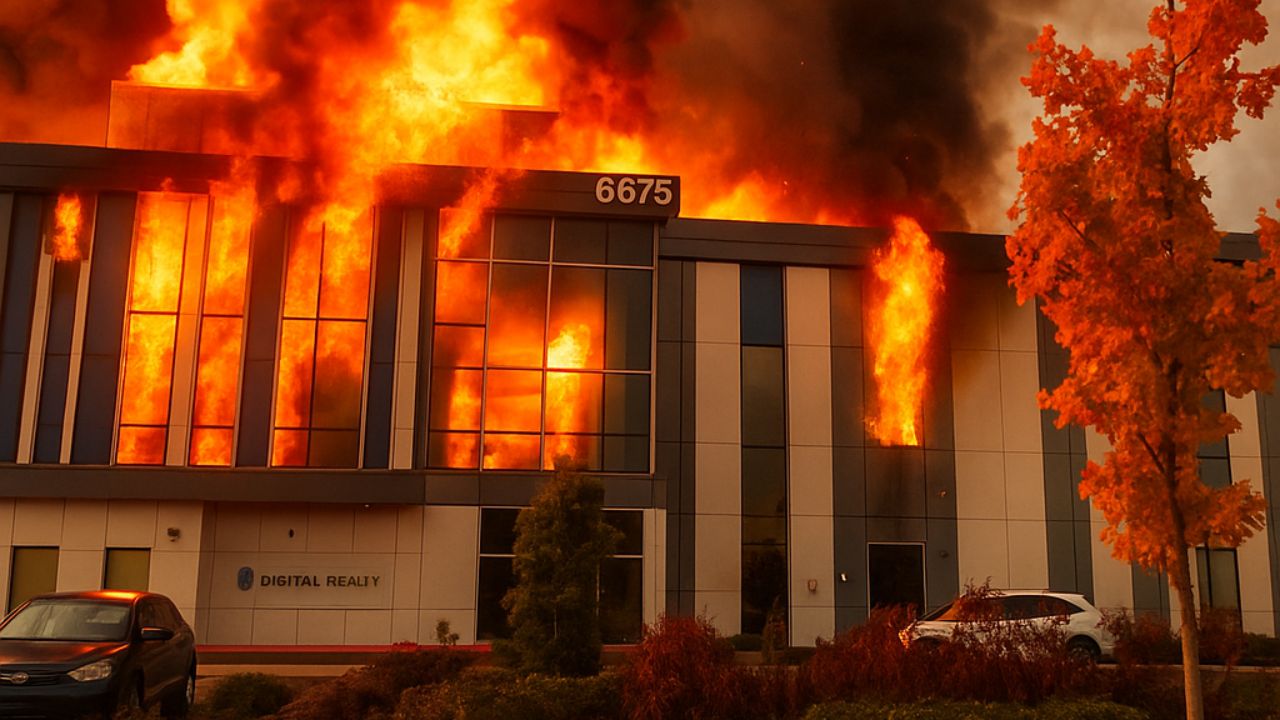The second time in less than a month X, the social media platform that was previously called Twitter was hit with a massive interruption late on Tuesday that left users inaccessible access to crucial features for almost two hours. The downtime, which hit customers of North America and Europe, was attributed to a incident that started in an important data centre located in Oregon. It has also raised questions concerning the safety of its network under the direction under the leadership of Elon Musk.
According to internal company communications reviewed by CNN, the fire broke out in a server room at X’s Prineville, Oregon, data center, a facility operated in partnership with tech infrastructure giant Oracle. The emergency responders swiftly contained the fire However, not until critical equipment was shut off and triggered a chain reaction that saw millions of users looking at errors and delayed timelines that were broken. While no injuries were reported, the incident has reignited debates about X’s ability to maintain stability amid aggressive cost-cutting measures and layoffs that have slashed its technical operations teams.
“This is not just about a fire—it’s about a pattern of instability,” said Rebecca Chambers, a former X infrastructure engineer who left the company last year. “When you cut corners on maintenance and reduce staff who monitor these systems, even small incidents can spiral.” Chambers, like other former employees who spoke to CNN, described a culture of “band-aid fixes” under Musk, where preventive upgrades were deprioritized in favor of short-term cost savings.
The Oregon data center fire comes just weeks after a similar outage in early April, which X blamed on an “internal configuration error.” That incident, which lasted over 90 minutes, frustrated advertisers and high-profile users, including celebrities and politicians who rely on the platform for real-time engagement. This time, however, the disruption was compounded by the physical damage to servers, requiring engineers to reroute traffic to backup facilities—a process that took longer than expected due to what one source described as “strained” technical resources.
X’s head of business operations, Joe Benarroch, acknowledged the outage in a statement but downplayed its severity. “Our teams acted swiftly to restore service, and we’ve already implemented additional safeguards to prevent future incidents,” he said. Yet industry analysts remain skeptical. “Data centers don’t just catch fire without underlying issues—whether it’s electrical faults, cooling failures, or inadequate monitoring,” explained Daniel Lee, a cloud infrastructure specialist at Gartner. “The fact that this keeps happening suggests deeper operational problems.”
The Prineville center, situated in the tech corridor of central Oregon it isn’t a one’s favorite target for debate. In 2022, environmental groups expressed concern regarding the facility’s use of water as well as energy requirements, worries which were ignored because the center was developed to handle more the processing of data for X. Now, with this latest incident, questions are mounting about whether the company’s infrastructure can keep pace with its ambitions—especially as Musk pushes X toward becoming an “everything app” with payments, streaming, and AI integrations.
For ordinary users, the downtime was far more than the inconvenience. Small businesses that depend on X to reach out to customers reported dropping sales in peak times as journalists reporting current events were shut out of an essential distribution service. It’s frustrating, but at this point, it’s also predictable,” stated Marisol Gutierrez, a digital marketer from Austin. “Every few weeks, something goes wrong. You start to wonder if it’s even worth investing time in building an audience here.”
Advertisers, already wary of X’s turbulent reputation, are growing increasingly nervous. According to ad analytics firm Pathmatics, X’s ad revenue dipped nearly 12% last quarter, with major brands citing “reliability concerns” as a key factor. “When outages happen, ads don’t load, and campaigns fail,” said Pathmatics CEO Melissa Mackey. “That’s a hard sell to marketers who have other, more stable options.”
Behind the scenes, X engineers are racing to shore up vulnerabilities, but insiders say morale is low. Since Musk’s takeover in late 2022, the company has lost over 80% of its pre-acquisition staff, including many senior engineers with deep institutional knowledge of its systems. “There’s a lot of talent drain,” said one current employee, speaking on condition of anonymity. “You can’t just replace decades of experience overnight, especially when the remaining teams are stretched so thin.”
As regulators take notice, the fallout from the Oregon data center fire could extend beyond temporary downtime. The Federal Communications Commission (FCC) has already opened inquiries into previous X outages, and experts say this incident may prompt further scrutiny. “When a platform of this scale fails repeatedly, it stops being a technical issue and becomes a public trust issue,” said former FCC advisor Colin Crowell.
For now, X remains online, but the bigger question is whether it can stay there reliably. With competitors like Meta’s Threads and decentralized platforms like Bluesky gaining traction, users—and advertisers—may soon decide they’ve had enough of the turbulence. As one former executive put it: “Elon loves to move fast and break things. The problem is, when you break the same thing over and over, people stop waiting around for you to fix it.”
As investigators assess the damage in Oregon, one thing is clear: X’s technical woes are far from over. And with each outage, the platform’s future grows a little more uncertain.

